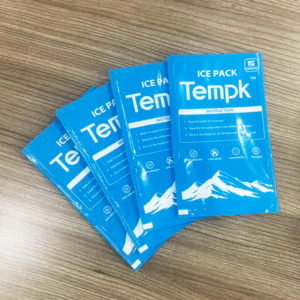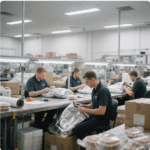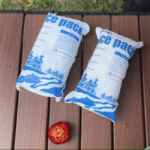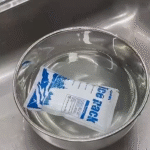How Does a Vaccine Cold Chain System Work in 2025?
Introduction: The integrity of every dose depends on a reliable vaccine cold chain system. This process maintains vaccines within strict temperature ranges from the factory to your patient’s arm. In 2025 the vaccine logistics market is valued around USD 3.29 billion and nearly 25 % of vaccines globally are lost due to temperature excursions. You’ll learn how a robust vaccine cold chain system protects potency, meets compliance requirements and incorporates emerging technologies.

What is a vaccine cold chain system and why is it essential? (definition and components)
How do you maintain the right temperature in a vaccine cold chain system? (temperature ranges & équipement)
How do you design a reliable vaccine cold chain strategy in 2025? (step by step blueprint)
What innovations are shaping vaccine cold chain systems? (digitalisation, ultra low storage, drones, durabilité, IA)
How do regulations and compliance affect vaccine cold chain systems? (CDC, OMS, PIB, DSCSA)
What benefits will a vaccine cold chain system bring to you? (patient safety, réduction des déchets, regulatory confidence)
What Is a Vaccine Cold Chain System and Why Does It Matter?
Definition and significance: UN vaccine cold chain system is the network of refrigerated storage and transport that keeps vaccines within their recommended temperature ranges, généralement 2 ° C - 8 ° C for standard vaccines and –80 °C to –60 °C for many mRNA formulas. Deviations destroy active ingredients and compromise protection, which is why the World Health Organization estimates that 25 % of vaccines are damaged worldwide due to cold chain failures. Maintaining a stable vaccine cold chain system ensures patients receive potent vaccines, helps meet regulatory requirements and avoids the costs of wasted doses.
Importance for you: Whether you run a clinic, manage a laboratory or oversee distribution, a vaccine cold chain system protects your investment. Proper storage reduces revaccination, fosters community trust and shields your organization from liability.
Key Components of a Vaccine Cold Chain
Chaque vaccine cold chain system comprises several interconnected elements that work together to preserve potency:
| Composant | Description | Importance pratique |
| Stockage à température contrôlée | Refrigerators (2 ° C - 8 ° C), congélateurs (–50 °C à –15 °C), ultra low freezers (–90 ° C à –60 ° C) and cryogenic units (< –80 °C) are used depending on the vaccine. | Ensures each vaccine stays within its required range; Par exemple, mRNA vaccines require –80 °C to –60 °C storage. |
| Packaging systems | Systèmes passifs use insulated boxes with gel packs or phase change materials; systèmes actifs include powered containers with refrigeration units. | Passive packages suit short journeys; active systems handle long distances and extreme conditions. |
| Monitoring technology | Enregistreurs de données numériques, Capteurs IoT, GPS, RFID tags and cloud dashboards provide real time temperature, données d'humidité et de localisation. | Continuous monitoring enables immediate alerts and reduces vaccine waste by up to 50 %. |
| Trained staff and SOPs | Personnel must understand packaging, interpret sensor alerts and follow standard operating procedures (Sops). | Consistent processes minimise human error and ensure compliance. |
| Conformité réglementaire | Guidelines from CDC, OMS, la loi sur la sécurité de la chaîne d'approvisionnement en médicaments (DSCSA) et bonnes pratiques de distribution (PIB) set storage rules and documentation requirements. | Adhering to regulations prevents fines and protects patient safety. |
Analogy: Think of a vaccine cold chain system like a marathon relay. Each runner (manufacturer, expéditeur, storage facility and clinic) must pass the baton (vaccins) without dropping it or letting it overheat. Even a small slip can ruin the race.
To make it practical for you
Audit your current storage units: Identify which vaccines require refrigeration (2 ° C - 8 ° C) and which demand ultra low freezers.
Document your chain of custody: Use digital logs to record temperatures and hand offs—similar to tracking packages online.
Train your team regularly: Develop SOPs and conduct drills to prepare for power outages and equipment failures.
Implement sensors: Adopt IoT enabled monitoring devices to receive real time alerts if the temperature deviates.
Cas du monde réel: In a clinic equipped with Nexleaf’s ColdTrace sensors, a power outage triggered an alert that allowed staff to restore refrigeration before vaccine temperatures exceeded safe limits, saving nearly 2,000 doses.
How Do You Maintain the Right Temperature in a Vaccine Cold Chain System?
Réponse de base: Keeping vaccines potent means maintaining them within specified temperature ranges. For most routine vaccines, that’s between 2 °C et 8 °C. Frozen vaccines may require –20 °C à –30 °C, while mRNA and gene therapies demand –80 °C to –60 °C or lower. Failing to follow these ranges can render vaccines ineffective or harmful.
Plongée profonde:
The CDC recommends storing refrigerated vaccines between 2 °C et 8 °C, with an ideal mid point of 5 °C. Never freeze these vaccines; the only exception is MMR which can be kept in a freezer.
Frozen vaccines—such as some polio and Ebola doses—must be kept between –50 °C and –15 °C. A stand alone freezer is the best unit for this purpose.
Ultra cold vaccines (like Pfizer BioNTech’s mRNA products) exiger –90 ° C à –60 ° C stockage. Cependant, once thawed they can stay at 2 °C–8 °C jusqu'à 10 semaines.
Monitoring and Technologies for Real Time Visibility
Moderne vaccine cold chain systems leverage technology to maintain temperature and accountability:
| Technologie | Description | Avantage |
| Enregistreurs de données numériques | Devices that record temperatures continuously and store thousands of readings; they should be placed in the centre of the packaging. | Provide accurate historical records and help validate excursions. |
| Capteurs IoT | Sensors use cellular, GPS or Bluetooth to transmit real time temperature, données d'humidité et de localisation. | Enable remote monitoring, reduce waste by up to 50 % and integrate into dashboards. |
| RFID & Traceurs GPS | RFID tags trigger automated updates at checkpoints; GPS trackers provide real time location. | Improve route planning and ensure prompt interventions when delays occur. |
| Blockchain ledgers | Platforms like PharmaChain record every event in the supply chain, creating a tamper proof temperature history. | Enhance trust, reduce fraud and facilitate regulatory audits. |
Conseil pratique: Integrate your sensors with a dashboard that sends SMS or email alerts. When a threshold is breached, you can act immediately—much like receiving an alert when your home freezer door is left open.
Practical Temperature Guidelines
Refrigerated vaccines: Store between 2 °C et 8 °C and aim for an ideal 5 °C. Check and record min/max temperatures at the start of each workday.
Vaccins congelés: Maintain between –50 °C and –15 °C. Use water bottles to stabilize temperature and never put vaccines on door shelves.
Ultra cold vaccines: Store between –90 °C and –60 °C. For example, Comirnaty and Pfizer BioNTech vaccines may be kept at 2 °C–8 °C jusqu'à 10 semaines après décongélation.
Cryogenic therapies: Use liquid nitrogen dewars for shipments requiring –150 °C and below; monitor both interior and exterior temperatures for safety.
Tips for everyday scenarios
Clinic refrigerators: Replace crisper bins with water bottles to help maintain temperature. Label bottles “Do Not Drink” and never store food alongside vaccines.
Power failure contingency: Keep spare generators or battery backups on site and plan transfers to alternate units when a freezer warms above its threshold.
Remote deliveries: For rural clinics, use solar powered refrigerators and drones equipped with insulated packaging; early results show drones reduce product loss and improve on time delivery.
How Do You Design a Reliable Vaccine Cold Chain Strategy in 2025?
Réponse de base: Designing a robust vaccine cold chain system involves a structured, end to end approach. You need to assess risks, select proper packaging, validate equipment, plan routes, implement continuous monitoring, prepare contingency plans and continuously improve.
Explication élargie:
Assess risks and vaccine portfolio: Identify each vaccine’s temperature range and hold time. Map potential risks like long transit times, last mile access and power outages.
Choisissez un emballage approprié: Decide between passive or active systems based on shipment duration and temperature requirements. For 2 °C–8 °C shipments, insulated boxes with gel packs may suffice; for mRNA shipments use vacuum insulated shippers and dry ice or active containers.
Valider l'équipement: Calibrate refrigerators, freezers and sensors; perform test runs to measure temperature stability.
Plan routes and carriers: Select carriers with validated cold chain capabilities. Use predictive analytics and AI to optimize routes; AI can reduce transit time by up to 30 %.
Mettre en œuvre une surveillance continue: Equip every shipment with IoT sensors and data loggers; set alert thresholds and track shipments in real time.
Préparer des plans d'urgence: Arrange alternative refrigeration facilities and emergency dry ice; train staff on response actions.
Maintain documentation and compliance: Record temperature logs, hand off times and chain of custody information; use blockchain or digital records to ensure authenticity.
Réviser et améliorer: Après chaque expédition, evaluate metrics like temperature stability and incident responses; use data analytics to identify patterns and refine procedures.
Practical Tips for Different Scenarios
| Scénario | Recommended Actions | Comment ça vous aide |
| Remote clinics with unreliable power | Deploy solar powered refrigerators and sensor based monitoring; use vaccines with longer shelf lives; train staff to pack shipments quickly. | Ensures vaccines remain potent even with intermittent power; improves resilience. |
| Last mile delivery to rural areas | Use drone transport with temperature controlled packaging; programmes like Rwanda’s VaccAir show drones reduce product loss and improve delivery times. | Reaches hard to access regions quickly and reduces spoilage. |
| High value cell therapy shipments | Use cryogenic liquid nitrogen dewars with shock absorbing packaging; include redundant sensors; arrange escort services. | Protects fragile therapies and ensures regulatory compliance. |
| Freezer failure contingency | Keep spare generators or battery backups; transfer vaccines to alternative units; use digital alerts to notify staff. | Prevents temperature excursions and saves vaccines during unexpected failures. |
Interactive element: Try a self assessment. Rate each of these areas (risk assessment, conditionnement, equipment validation, route planning, surveillance, contingency) on a scale of 1–5. If any area scores below 3, focus on improving that aspect of your vaccine cold chain system.
What Innovations Are Shaping Vaccine Cold Chain Systems?
Réponse de base: New technologies are transforming how vaccine cold chain systems operate. Numérisation, ultra low temperature innovation, drones, sustainable packaging and AI all play crucial roles.
Digitalisation and Traceability
End to end visibility is now a baseline expectation. Capteurs IoT, cloud platforms, RFID tags and blockchain collectively provide real time data on location, temperature and custody. Blockchain ensures tamper proof records and reduces fraud.
Ultra Low Temperature Innovation
The rise of mRNA vaccines and gene therapies has increased demand for cryogenic logistics. Manufacturers are developing ultra low freezers and dry shippers that maintain –80 °C à –150 °C while reducing energy use. These innovations support remote transport without compromising product viability.
Drones and Last Mile Automation
The medical drone delivery services market is expected to grow from USD 358.8 millions en 2025 en USD 2.5 milliards 2034. Drones reduce delivery times, circumvent traffic and reach remote locations. Programmes such as VaccAir integrate drones with insulated packaging to reduce product loss. Automated storage and retrieval systems in warehouses also reduce handling errors and operate 24/7.
Sustainable Packaging and Renewable Energy
La durabilité n’est plus une option. The reusable cold chain packaging market will grow from USD 4.97 milliards en 2025 en USD 9.13 milliards 2034. Systèmes de réfrigération économes en énergie, renewable energy sources (Par exemple, solar powered refrigerators) and recyclable materials reduce the carbon footprint of vaccine transportation.
Artificial Intelligence and Predictive Analytics
L'IA optimise les itinéraires, forecasts demand and predicts equipment failures. By analysing historical and real time data, AI can reduce transit times by jusqu'à 30 %. Predictive maintenance uses sensor data to alert staff before a freezer fails.
Market Insights and Growth Projections
| Métrique | 2025 Valeur | Projected Value | Notes |
| Vaccine logistics market | USD 3.29 milliard | USD 4.25 milliards 2030 (TCAC 5.24 %) | Asia Pacific is the fastest growing region; Europe currently holds the largest share. |
| Vaccine storage & packaging market | USD 4.78 milliards en 2024 | USD 8.11 milliards 2030 | Growth driven by mRNA vaccines and digital monitoring. |
| Reusable packaging market | USD 4.97 milliards en 2025 | USD 9.13 milliards 2034 | Sustainability and cost savings fuel demand. |
| Medical drone delivery market | USD 358.8 millions en 2025 | USD 2.5 milliards 2034 | Rapid expansion due to last mile challenges. |
| Pharmaceutical cold chain market | N / A | USD 1,454 milliards 2029 with CAGR 4.71 % | Gene and cell therapies drive growth. |
Emporter: Embracing these innovations can give you a competitive advantage. Digital tools enhance visibility, drones expand reach, sustainable packaging improves your environmental footprint and AI minimises waste and costs.
How Do Regulations and Compliance Affect Vaccine Cold Chain Systems?
Réponse de base: Regulatory frameworks define how vaccines should be stored, transported and recorded. Adherence ensures patient safety, avoids fines and maintains access to publicly funded vaccines.
Major Guidelines
CDC Vaccine Storage and Handling Toolkit: Provides comprehensive guidance on storage, transport and emergency handling. It recommends using digital data loggers with buffered probes and storing vaccines at the appropriate temperature ranges. The ideal refrigerator temperature is 5 °C.
WHO Vaccine Management Handbook: Offers global standards for vaccine cold chain systems and emphasises continuous temperature monitoring.
DSCSA (NOUS.): Requires electronic transaction data and digital tracking for pharmaceuticals to prevent counterfeiting and ensure traceability.
Bonne pratique de distribution (PIB): Outlines standards for the distribution of pharmaceutical products. GDP emphasises proper packaging, documentation and temperature control.
Association internationale des transports aériens (Iata): Sets guidelines for air cargo shipments, y compris l'emballage, labelling and temperature control.
Training and Standard Operating Procedures
Un conforme vaccine cold chain system requires well trained staff and documented procedures:
| Aspect | Meilleures pratiques | Pourquoi ça compte |
| Formation du personnel | Train healthcare professionals on proper handling, temperature monitoring and emergency response. | Reduces human errors and ensures consistent adherence to guidelines. |
| Procédures opérationnelles standard (Sops) | Define responsibilities, packing methods, route planning and corrective actions. | Provides a clear playbook for routine and emergency situations. |
| Emergency protocols | Develop plans for power outages, equipment failures and delays; keep backup generators and alternate storage facilities. | Minimises vaccine loss during unexpected events. |
| Documentation | Record temperature logs, chain of custody and transaction data; use digital systems or blockchain for authenticity. | Facilitates audits and proves compliance with DSCSA and GDP requirements. |
Conseil: Post “Do Not Unplug” signs on refrigerators and freezers to prevent accidental disconnections.
How Can Vaccine Cold Chain Systems Benefit Your Practice or Organization?
Investing in a resilient vaccine cold chain system offers tangible benefits:
Protect patient safety: Potent vaccines mean better immunity and fewer disease outbreaks.
Reduce waste and costs: With real time monitoring and proper packaging, you can reduce vaccine waste by up to 50 %, saving thousands of dollars annually.
Enhance reputation: Compliance with CDC and WHO guidelines builds trust among patients and regulators.
Expand access: Using drones and portable refrigerators enables you to reach remote communities quickly.
Future proof your operations: Implementing AI and digital traceability prepares your organisation for evolving regulations and technologies.
Conseils pratiques et recommandations
Start small and scale: Begin by auditing one part of your vaccine cold chain system, such as monitoring sensors, then gradually upgrade packaging and transport.
Use predictive analytics: Leverage AI to optimise routes and schedule equipment maintenance, reducing delays and preventing failures.
Engage partners: Collaborate with packaging providers, drone operators and technology firms to build an integrated solution; strategic partnerships can broaden market reach.
Measure performance: Track metrics like temperature excursions, transit times and delivery success; use data dashboards to identify bottlenecks.
Real case example: In a remote health program, solar powered refrigerators combined with drones delivered vaccines to rural clinics, cutting delivery time from several hours to less than 30 minutes and eliminating spoilage.
2025 Latest Vaccine Cold Chain Developments and Trends
Aperçu de la tendance: Dans 2025 the vaccine cold chain sector is expanding, driven by innovations and regulatory shifts. Automation and robotics, durabilité, suivi en temps réel, modernisation, AI and strategic partnerships are among the key forces shaping this landscape.
Dernier progrès en un coup d'œil
Automatisation et robotique: À propos 80 % of warehouses are not automated; adoption of automated storage and retrieval systems (AS/RS) is increasing to address labour shortages and reduce errors. Robots improve throughput and maintain consistent temperature control.
Durabilité: Cold chain infrastructure contributes roughly 2 % des émissions mondiales de CO₂. Companies are adopting energy efficient refrigeration, renewable energy and recyclable packaging.
Visibilité de bout en bout: Hardware accounted for more than 76.4 % of the cold chain tracking market dans 2022. IoT enabled devices provide real time data to optimise routes and ensure compliance.
Modernisation: Aging infrastructure is being upgraded with modern refrigeration systems, isolation, data collection and on site renewable energy.
IA et analyse prédictive: AI helps forecast demand, plan routes and predict equipment maintenance, leading to smarter decisions and cost savings.
Growth in Pharmaceutical Cold Chain: Environ 20 % of new drugs are gene and cell based therapies requiring close temperature control; the global pharmaceutical cold chain market is projected to reach USD 1,454 milliards 2029 avec un TCAC de 4.71 %.
Investment in Fresh Food and Last Mile Delivery: Le marché nord-américain de la logistique de la chaîne du froid alimentaire devrait atteindre USD 86.67 milliards en 2025. The rise of plant based and organic products increases demand for refrigerated transport.
Partenariats stratégiques: Par 2025 à propos 74 % of logistics data is expected to be standardised, enabling seamless integration across supply chains and promoting collaboration among food manufacturers, packaging suppliers and tech providers.
Market insights and evolving trends
The cold chain market is projected to grow from USD 454.48 milliards en 2025 en USD 776.01 milliards 2029, représentant un TCAC de 12.2 %. The industry employs over 576,300 personnes and has seen more than 2,800 brevets registered. Startups such as Coldcart (parcel shipping), Biocold Technologies (natural refrigeration), Botanic Energy (thermodynamic tech), FishLog (fisheries cold chain) and Cryo Vacc (vaccines storage and tracking) highlight ongoing innovation.
Questions fréquemment posées
Question 1: How often should I monitor vaccine storage temperatures?
Check and record refrigerator and freezer temperatures at least twice daily—typically at the start and end of the workday. Digital data loggers with buffered probes offer the most accurate readings.
Question 2: Can vaccines be refrozen if they thaw accidentally?
Non. Once thawed, most vaccines cannot be refrozen. For mRNA vaccines, thawed vials can remain at 2 °C–8 °C jusqu'à 10 semaines, but refreezing may damage the product.
Question 3: Are there specific temperature ranges for different vaccines?
Oui. Standard vaccines require 2 ° C - 8 ° C, frozen vaccines need –50 °C to –15 °C and mRNA or gene therapies demand –80 °C to –60 °C or even lower.
Question 4: What should I do during a power outage?
Immediately implement your emergency protocol: switch to backup generators, keep refrigerator and freezer doors closed and transfer vaccines to another unit if necessary. Digital alerts can help you act quickly.
Résumé et recommandations
Principaux à retenir: UN vaccine cold chain system is the backbone of vaccine potency and patient safety. Maintaining temperature ranges (2 °C – 8 °C pour la plupart des vaccins, –80 °C to –60 °C for mRNA formulas) prevents waste and ensures efficacy. Modern systems integrate passive and active packaging, Capteurs IoT, blockchain and AI to provide real time visibility and optimise routes. Designing a robust vaccine cold chain involves assessing risks, selecting proper packaging, validating equipment, planning routes, monitoring continuously and preparing contingency plans. Regulations from the CDC, OMS, GDP and DSCSA set the rules; adhering to them protects patients and builds trust.
Action steps for you:
Audit your current vaccine cold chain system: Map the temperature requirements of your vaccine portfolio and identify gaps.
Upgrade monitoring technology: Invest in digital data loggers, IoT sensors and blockchain records for real time tracking and traceability.
Standardise procedures: Develop SOPs for packing, transport and emergency response; train your team regularly and document every hand off.
Explore innovation: Consider drones for last mile delivery, sustainable packaging and AI powered route optimisation to future proof operations.
Rester informé: Monitor regulatory updates from the CDC, WHO and IATA; update your protocols and equipment accordingly.
À propos du tempk
Tempk specialises in temperature controlled packaging and monitoring solutions tailored for the pharmaceutical and biotechnology sectors. Our products include boîtes isolées, gel and dry ice packs et IoT enabled data loggers designed to maintain precise temperature ranges. We also offer solar powered refrigeration units for remote clinics and drone compatible shippers for last mile deliveries. By combining robust materials with digital monitoring, we help clients reduce vaccine waste, ensure regulatory compliance and support sustainability goals.
Ready to optimise your vaccine cold chain system? Contact our experts to design a customised solution that protects your vaccines, reduces waste and positions your organisation at the forefront of healthcare innovation.























